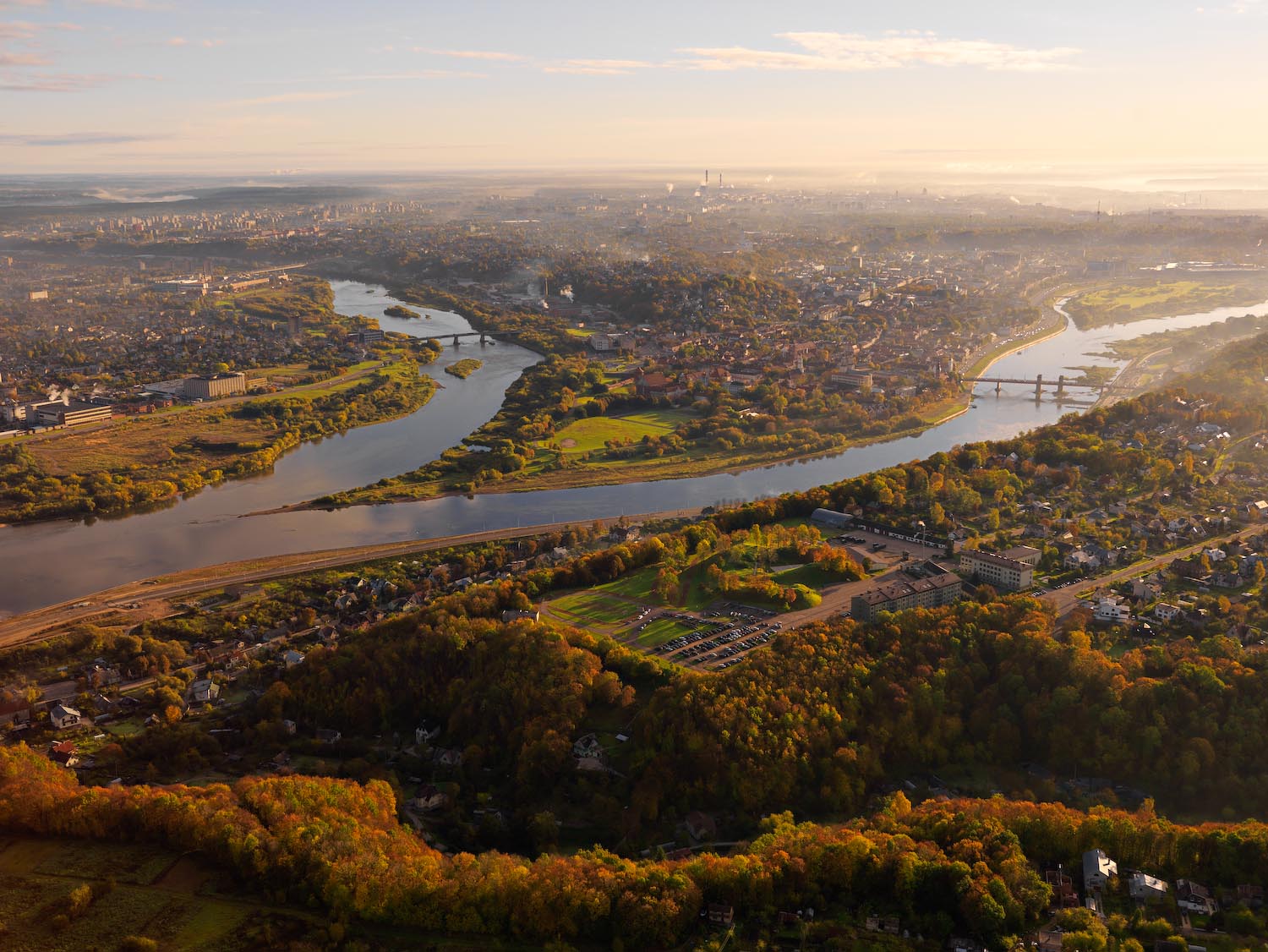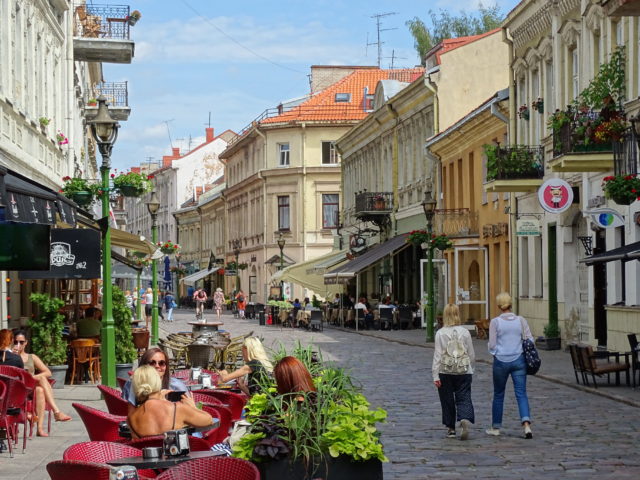
Kaunas might look like the ’Burgh, but it has an interesting history all its own.
What if I told you there was a city nearly the same size and shape as Pittsburgh complete with eerie parallels and its own interesting history?
During the worst of the pandemic when we all had plenty of time on our hands, friend and Incline subscriber Chelsea M. alerted me to the fact that Pittsburgh has a doppelgänger — the city of Kaunas, Lithuania. See for yourself:

It’s uncanny. Both cities’ rivers have similar curves. Both have a park with a fort where those rivers meet. Both sport a bluff with an observation deck from which you can see the city center. Both have large industrial districts on their outskirts. Kaunas’s university and the adjacent museum complex are right where Oakland is. Schenley Park and Highland Park are roughly in the same spots where Kaunas’s Ąžuolyno parkas (or “Oak-Wood Park”) and Kleboniškis Forest Park sit. Kaunas even has an incline. The resemblances go on and on.
Reddit first got wind of these similarities about 10 years ago, so clearly this has been hiding in plain sight for some time. Many agreed that Kaunas shares Pittsburgh’s photogenic qualities.
Redditors in December 2020 had much more to say when the topic reemerged. Other similarities ranged from the two cities’ similar climates to the fact that Kaunas is Lithuania’s second-largest city (much like Pittsburgh is PA’s second-largest). Perhaps most interesting were commenters on both threads remarking on how their grandparents moved from Kaunas to Pittsburgh in the mid-20th century and felt right at home.
So what’s up with Kaunas, exactly, and why isn’t it our sister city?
A brief history of Kaunas
In legend, Kaunas was founded by Romans fleeing Nero. The reality is less clear, but the settlement first appears in a historical record when Teutonic knights were about to attack it in their bid to bring Christianity to the Baltic States. Grand Duke of Lithuania Vytautas granted Kaunas’s citizens a measure of autonomy in 1408, and the city’s position as a center of commerce drew a polyethnic population over the following centuries that included Lithuanians, Germans, Poles and, in the 17th century, a large population of Ashkenazi Jews.
Wars, plague and the ascendant Russian Empire set Kaunas back as the Grand Duchy of Lithuania’s power waned. Russia forcibly annexed the area in 1795 and invested in the city, turning it into a fortress and center of culture. However, the fortress wasn’t strong enough to withstand German advances in World War I. A weakened Russia succumbed to revolution, and numerous countries that had come under Russian domination, including Lithuania, made bids for independence. In the scramble, Poland annexed Lithuania’s now-capital of Vilnius, which then had a large population of Poles. Kaunas, then with a plurality of Jewish residents, became independent Lithuania’s temporary capital.
World War II and the Holocaust upended this brief period of prominence. The city’s Jews were first forced into a ghetto, then forcibly expatriated and, in many cases, murdered. Meanwhile, Kaunas’s gentile citizens resisted occupation, first under the Nazis, then under the Soviet Union, establishing a Lithuanian tradition of passive civil disobedience that helped shape the modern state’s identity.
Today, Kaunas’s population of 299,000 (just 3,000 less than Pittsburgh) is mostly of Lithuanian ancestry. However, the cityscape still boasts historic synagogues and mosques that attest to its multiethnic golden age as well as monuments to Russian grandeur and Soviet might.

Pittsburgh’s actual sister cities
So, why isn’t a city with so many interesting Pittsburgh parallels our sister city? Part of the reason is we already have sister city relationships with 17 metropolises across the globe.
“Twinning” cities was an intentional effort to foster international dialogue after the destruction of World War II. Like other government projects including the Fulbright Commission and Peace Corps, Sister Cities International was funded by the government to foster peace and prosperity and lessen the risk of nuclear conflict. Many of our sister cities — such as Saarbrücken, Germany, our original sister city dating back to 1956 — were chosen at a time when Kaunas and other cities were also in the Soviet Union’s sphere of influence.
Meanwhile, other Pittsburgh sibs like Glasgow, Bilbao and Sheffield (England’s own “Steel City”) have histories of industry that mirror our own. More recently, Pittsburgh has formed sister city relationships with former Warsaw Pact towns like Ostrava, a steel town in the Czech Republic; and Da Nang, a site of fierce fighting during the Vietnam War. Kaunas apparently isn’t on the radar.
Looking to the future
Given that Pittsburgh keeps forming sister city relationships and benefiting from international accolades, it’s entirely possible we could eventually pair up with Kaunas. After all, there’s a market square right where we have ours, a whole series of historic bridges, several universities including one focused on tech and laurels from UNESCO and the EU for being pretty and cultured. Kaunas was even one of 2022’s European Capitals of Culture.
Sounds like a perfect match! At the very least, it’s interesting to know that across an ocean sits a city that maps onto ours so neatly. Pittsburgh and Kaunas could no doubt learn a lot from each other’s turbulent histories and odd similarity.
Correction: An earlier version of this article described Ostrava as formerly Soviet. Ostrava was within the Warsaw Pact in Communist Czechoslovakia, but was not in fact “Soviet.”